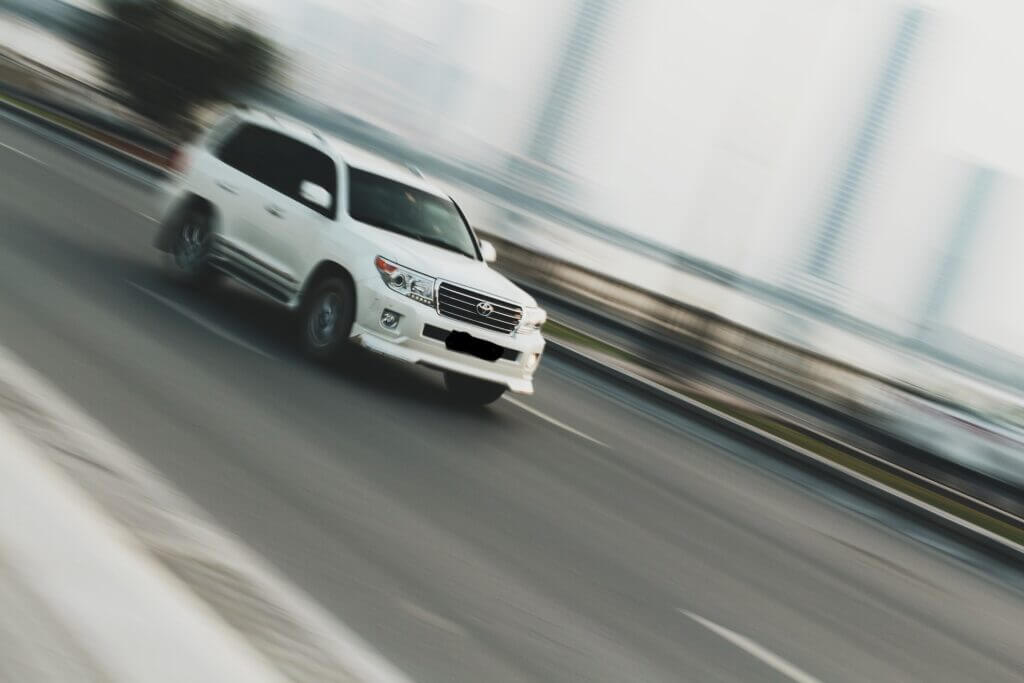
How Driving Habits Affect Tire Wear
June 2023
Driving habits can play a significant part on the wear and tear of your tires. In this article, we will go over several factors that you can think about while driving to help preserve not only your tires but several other vehicle components as well. Driving habits aren’t the only habits that can impact tire wear. We will also touch on a few routine habits, we’ll call them “vehicle habits,” to get into to help improve the life of your tires and the life of your vehicle.
Driving Habits
Acceleration and Braking
This should be the obvious one for most when they think of driving habits that affect your tires. Aggressive acceleration and sudden braking put a lot of excessive stress on your tires. When you accelerate rapidly, the force exerted on the tires can cause them to lose traction and result in tire spin, leading to accelerated wear. Doing this once or twice isn’t going to suddenly make your tires bald, but if you are someone who takes off on the line every time… toning this back would do both your tires and vehicle some good. A slow and smooth acceleration from a complete stop is always the safest practice.
Similarly, slamming on the brakes can cause tire skidding and uneven wear. Sometimes, slamming on your brakes is unavoidable to keep yourself out of a collision. That is not what we’re talking about here. As a driver you should be alert and aware of the situations around you. When possible, it is best to decelerate by taking your foot off the gas pedal and gradually pump your brakes until you’re at a full stop.
It is important to keep in mind that there are times when quickly accelerating and braking are justified to keep yourself safe. However, doing it all the time is what causes wear issues. Finding a good medium will preserve your tires and braking components and should save you some money on vehicle maintenance.

Cornering
Taking corners faster then you should puts unnecessary strain on tires and suspension components. It can also put you in a dangerous situation where you can lose control of your vehicle, especially if the road you’re driving on is wet. Taking corners at high speeds or with excessive force can lead to tire scrubbing. Scrubbing occurs when the tires slide sideways during a turn due to excessive forces. This sideways movement causes the tire tread to wear unevenly, mainly on the edges. To minimize this tire scrubbing, take turns at reasonable speeds and avoid abrupt steering movements.
Speed
Driving at high speeds generates more heat, increasing the chances of early tire wear. The excessive heat buildup can weaken the tire’s internal structure, leading to premature failure. Additionally, high-speed driving reduces the tire’s contact with the road surface, causing increased wear on the center of the tread. Maintaining moderate and legal speeds helps preserve tire life.
If you are a person who likes to drive fast, make sure your tires are good for it. All tires come with a speed rating. Some higher than others. Get a tire that has a speed rating that exceeds your fastest speeds so you know you’re always covered.
Overloading
Overloading your vehicle beyond its recommended capacity can put excessive strain on the tires. The added weight increases rolling resistance and generates more heat, leading to accelerated tire wear. Overloading can also cause tire sidewalls to flex excessively, which can result in overheating and potential tire failure. Check your vehicle’s owner’s manual or tire placard (generally located inside the driver’s door) to determine the appropriate load capacity and avoid overloading your vehicle. Stand by the recommended load capacity to avoid unnecessary wear and potential safety risks.
Road Conditions
Driving on rough or poorly maintained roads can subject your tires to additional stress. Uneven road surfaces, potholes, and debris can cause impact damage, cuts, or punctures to the tire. These road hazards can result in sidewall damage or tread separation, significantly reducing tire life. Whenever possible, try to avoid rough road surfaces or drive cautiously to minimize the risk of tire damage.
Vehicle Habits
Tire Pressure
Maintaining proper tire inflation is crucial for even tread wear. Underinflated tires increase rolling resistance, leading to excessive heat buildup and uneven wear on the shoulders. Overinflated tires, on the other hand, cause the center of the tread to wear more quickly. Regularly check and adjust tire pressure according to the manufacturer’s recommendations. You can find recommended tire pressure for your vehicle on the vehicle placard inside the driver’s door or in your vehicle owner’s manual.
Tire Rotation
Regular tire rotation is essential for even tire wear. The front and rear tires wear differently due to variations in weight distribution and driving forces. Rotating tires according to the recommended intervals (usually every 5,000 to 10,000 miles) ensures even wear and maximizes tire lifespan. A lot of vehicles have Tire Pressure Monitoring Systems (TPMS) sensors that need adjusted after a rotation. If you don’t personally have the tool to do so, make sure you have your sensors adjusted at your local tire shop so you can know which tire is going low.
Wheel Aligment
Alignment issues can cause uneven tire wear. When the wheels are not properly aligned, tires may experience feathering (tread wear on one side) or camber wear (tire wear on the inside or outside edge). If you have your tires rotated by a tire or automotive shop, ask that they take a look at your alignment as well. Wheel alignment isn’t something that should need to be adjusted as much as a routine tire rotation or oil change, a good rule of thumb is to get an alignment done every time you get new tires. However, it is a vehicle maintenance item that you should keep an eye on to ensure your tires and vehicle components are wearing properly.
Tire Inspection
Giving your tires a visual inspection is something that every single person can and should do. It’s as easy as going around your vehicle every time you’re getting gas and looking your tires over. Check for cracks, cuts, chunks and bulges on your sidewall and give the visible tread a look for uneven wear and any potential penetrating objects. If you notice any abnormalities, consult your favorite local tire shop, Take Off Tire, for further inspection and necessary repairs.
Take Off Tire is one of the premier tire shops in Lincoln, NE and a great place to get your tires serviced. We also have an extensive selection of new tires to choose from. If you have any questions, give us a call at 402-413-6646 to talk to a dedicated tire salesman who will help you with any tire advise, or service, you may need!
